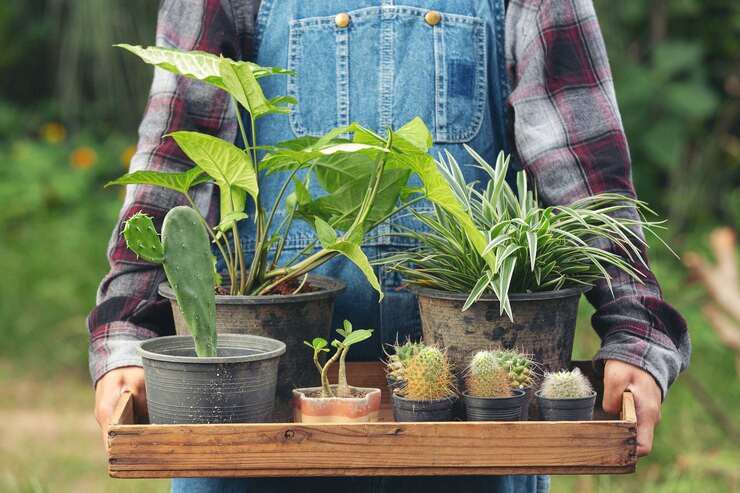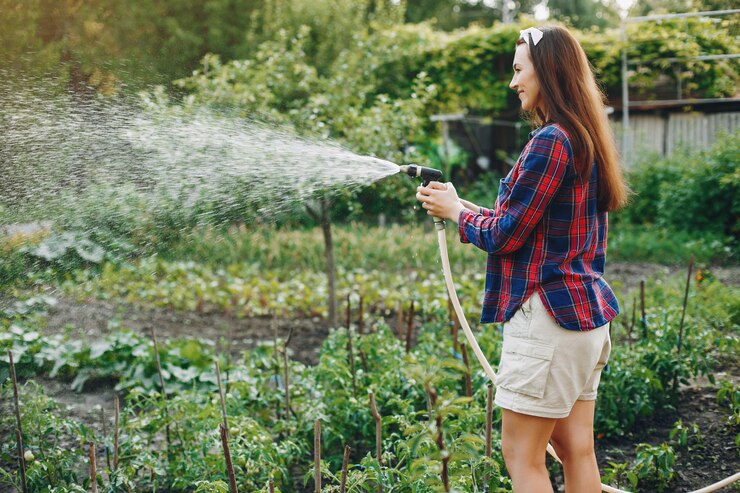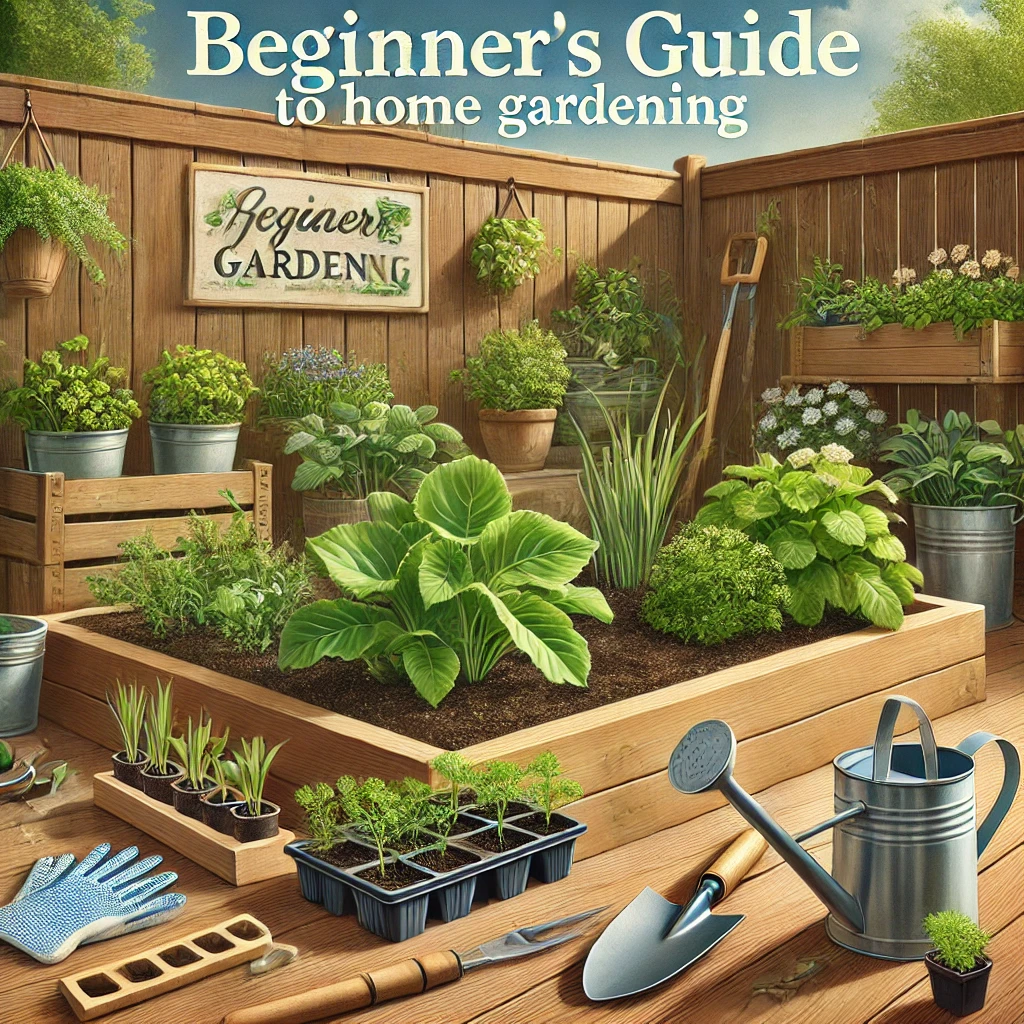Best Plants for Beginners – If you are new to gardening, you might feel a bit overwhelmed. Well, you’re not alone, and with that comes good news: there are lots of plants that are not a problem to grow and, consequently, great for a novice. It doesn’t matter if it’s herbs for your kitchen, indoor greenery in the form of succulents, or vegetables which don’t require much care; the important thing is choosing the right plants to get you started.
In this article, we look at the best plants for beginners, considering the types of plants that demand minimum care and thrive both indoors and outdoors.
By choosing the right plants, you shall be able to have a kick-start in your gardening journey with much confidence, since you’ll be learning the ropes without getting overwhelmed. Now, let us now look at some of the best plants for beginners to help you grow your green thumb!
Why Choosing the Right Plants Matters
In addition, selecting the proper plants starts the novice gardener on a path to both success and enjoyment. The best plants for the beginning gardener will be the hardiest, most low-maintenance plants that can adapt to various growing conditions. Any person-even the inexperienced-can gain the rewards from an indoor or outdoor garden, provided one makes the right choices.
This will minimize the risk of failure and reduce frustration. Besides, one can choose plants that will forgive some of the most common mistakes made by almost any gardener, such as overwatering or lack of light. Now, let’s see some of the best plants for a beginner that are not only easy to grow but can also be used for many things: from enhancing your indoor décor to adding flavor to your meals.
Theese are Best Plants for Beginners
1. Basil, Mint, and Parsley are considered herbs.
If you’re new to this and wondering where exactly to start with your choice of plants, then herbs become a great way to enter the world of gardening. Besides the fact that they are easy to grow, they are very useful in the kitchen when one intends to add fresh flavors to dishes.
Basil, mint, and parsley are among the best to grow for beginners, since they grow perfectly in indoor pots or containers on the sunny side of a window.
Why They’re Great for Beginners:
• Quick Growth: Herbs are fast-growing; you can see its growth in weeks.
• Low Maintenance: It requires much lesser care than other plants, so they are ideal for any new entrant.
• Versatility: Culinary purposes can be served in all manners with herbs, which makes them functional and rewarding to grow.
How to Care:
• Keep the herbs in a bright place as herbs need at least 4-6 hours of sunlight per day.
• Regularly water, but make sure the soil is well-draining to prevent root-rotting.
• Frequently prune herbs to keep them growing healthily and to prevent them from flowering prematurely.
2. Succulents: Low-Maintenance and Beautiful
Because of their hardy nature and neglectful requirements, succulents are actually some of the most low-maintenance plants anyone can have. These plants store water in their leaves, enabling them to survive for a pretty long time with no water or care.
Coming in a full variety of shapes and sizes, from rosette-shaped Echeveria to spiky Aloe Vera and trailing String of Pearls, there is sure to be something to add some zest to your home.
Why They’re Great for Beginners:
• Water-Efficient: Succulents do not require much irrigation because they store water in their thick, fleshy leaves.
• Low Light Tolerant: Most succulents do well with bright light; however, many species can survive under low-light conditions. For that fact, they are versatile enough to be taken into any home setting.
• Aesthetic: Succulents come in large variations of color, texture, and geometry; therefore, they are an aesthetically interesting plant for a new gardener.
Care Tips
• Water the soil completely but allow it to dry out between waterings as it may cause the roots to decay due to overwatering.
• Use a commercially prepared cactus or succulent soil mixture, which is designed for proper drainage.
• Succulents should be placed in a bright area where they could receive substantial sunlight to develop healthily.
3. Spider Plant (Chlorophytum comosum)
The Spider Plant is an excellent choice for those just starting with gardening. Known for its arching green leaves and small white flowers, this plant is not only attractive but also easy to take care of. It’s adaptable to a number of lighting conditions; thus, it is good for most variable indoor places.
Why It’s Perfect for Beginners:
• Low-Light Tolerant: This Spider Plant will do well under low to moderate light and, as such, is perfect for the majority of rooms that don’t get much sunlight.
• Resilient: These plants are pretty low maintenance and sometimes can survive under periods of neglect.
• Air Purifier: Spider Plants are cherished by many for their air-purifying qualities, really helping to improve the quality of the environment.
Care tips:
• When the top inch of the soil has dried out to the touch, water.
• Direct sunlight should be avoided. This will burn the leaves.
• Repotting every 1-2 years is necessary. That refreshes the soil and provides room for growth without too much crowding.
4. Snake Plant (Sansevieria trifasciata)
The Snake Plant is one of the best plants for beginners, as it is very hardy and virtually indestructible. It is often referred to as Mother-in-Law’s Tongue, which makes for quite the striking plant that boasts vertical leaves with a real bold look to them; it is probably one of the nicest low-maintenance house plants out there.
Why It’s Great for Beginners:
• Very Low-Maintenance: Snake plants can easily get by on infrequent watering, making it the ideal first plant since owners who are new to having one may struggle with having to water frequently.
• AC: Like Spider Plants, Snake Plants are air-purifying machinery.
• Low Light Tolerance: They can tolerate low light and hence work well in areas of your home where there isn’t any direct sunlight.
Care Tips:
• Water only when the soil is completely dry. The few things that will hurt this plant involve overwatering.
• Place in indirect light, although it will tolerate low light.
• Water with well-draining soil to avoid waterlogged roots.

5. Aloe Vera
Aloe Vera is a well-renowned succulent that is valuable not only for its low care but also for its soothing, curing gel. Aloe Vera does well under direct sun and makes an excellent plant for beginners who want to have low-care and no-fuss gardening with practical values.
Why It’s Great for Beginners:
• Setting It and Forgetting It: Since this succulent stores water in its thick leaves, it requires very minimal watering.
• Healing Properties: This gel-filled inside the leaves is used to heal burns and other skin irritants, which is why this makes a good plant to have around.
• Attractive: With its spiky, pointed leaves, this one gives your home a touch of modern appeal.
Care Tips:
• Water only when the soil is dry to the touch. Allow the first couple of inches of soil to go dry between waterings. Letting it sit in water will result in root rot.
• Place in a bright position with lots of indirect sunlight.
• Make sure pot is well-draining to ensure not a pool of water sits on the bottom.
6. Lettuce and Radishes: Easy Vegetables for Beginners
Growing your own food is an incredibly rewarding process, but of course, some vegetables are simply easier than others to grow. For the beginning gardener who just wants to try their hand at growing a vegetable, lettuce and radishes are two of the top vegetables to grow.
These vegetables grow very fast and basically take care of themselves; therefore, they are excellent for novice gardeners.
Why They’re Great for Beginners:
• Quick Harvest: Lettuce takes roughly 30 days, and radishes from seed to harvest take only about 20 to 30 days.
• Space not an Issue: Both can readily be grown in shallow containers or garden beds. This sets them perfect for apartment or small-space gardeners.
• Low Maintenance: Lettuce and radish require minimal care and do well with average soil.
Care Tips:
• The soil should be kept consistently moist but not waterlogged.
• Provides the right amount of sunlight-about 4-6 hours a day.
• Radish is to be harvested immediately when it’s ready so that it does not get woody.
7. Peace Lily (Spathiphyllum)
For the inexperienced landscaper who wants to avail themselves of a handsome, low-care houseplant, this lily will work famously well. It bears dark green leaves and white blossoms, and it is heaped with praise regarding its air-purifying qualities.
Why It’s Great for Beginners:
• Low-Light Tolerant: Peace Lilies can thrive under very low to medium light conditions, hence suitable for indoor areas.
• Low Maintenance: They require very little maintenance, and the flowers add a touch of beauty to any room.
• Air-Purifying: One of the popular air-filtering indoor plants is the Peace Lily, which will be a healthy plus for your home atmosphere.
Care Tips:
• Water when the soil feels dry to the touch but never let it overwater.
• Let them be in indirect light and clean the leaves regularly to maintain freshness.
• When flowers begin to fade, take them off; this will bring about more blooms.
Conclusion
Getting started with your gardening process need not be overwhelming. With the right plants, even a beginner can have a very successful and fulfilling experience. The best plants for a novice include easy-to-grow herbs, succulents, and low-maintenance vegetables that require very little effort in care.
If you choose plants that suit your space and lifestyle, you will head towards growing a successful garden right away.
Whether you’re growing fresh herbs for the kitchen, adding some greenery to your home in the form of succulents, or if it’s a first taste of homegrown lettuce, these beginner-friendly plants will set up the ground for confidence and allow one to enjoy the process.



